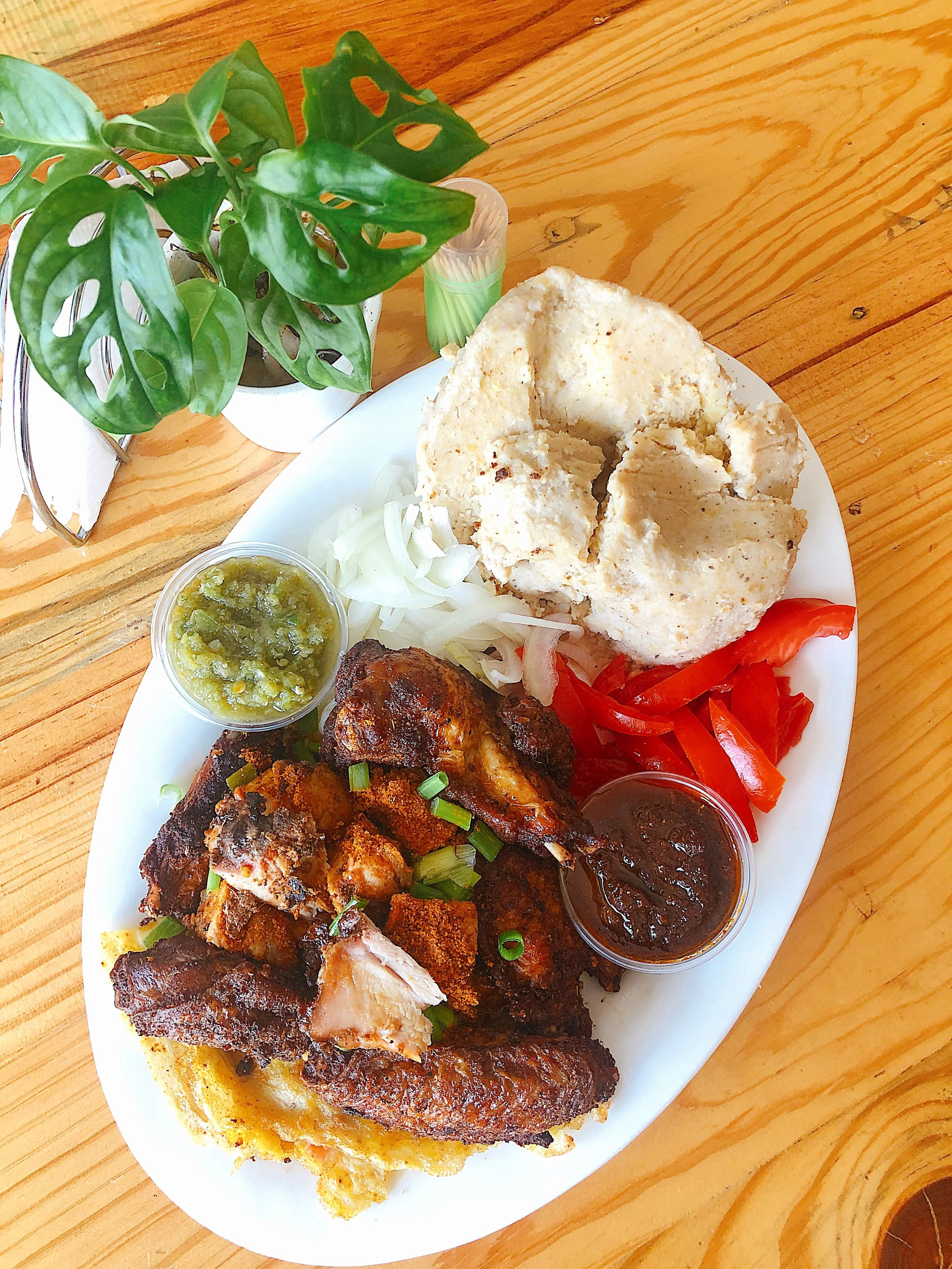Traditional Ghanaian Foods Rich In Probiotics.
There’s a lot of online and offline conversations currently going on regarding probiotics and which ingredients and foods contain these gut-healing, immune boosting bacteria. You’ve probably come across kimchi recipes, kombucha, miso soup recipes, kefir, yoghurt and sauerkraut on your TikTok fyp or Instagram Reels. All these probiotic foods are mostly originating from Asia, the Mediterranean and Europe countries. What about Africa? Ghana? Well, let’s explore the less often talked about Ghanaian ingredients and meals which contain these same probiotics.
What exactly are Probiotics?
Probiotics naturally existing good bacteria / live microorganisms which have health benefits when consumed in adequate quantities. They are produced when certain foods are fermented. Simply that. Fermentation as you know is an ancient technique used to preserve food and prevent spoilage, which makes it of course older than your humble refriegerator and freezer. Our grandmothers were using fermentation wisely to preserve food and create unique flavours in certain dishes and drinks. Today we still use these same fermentation techniques for the following dishes which you might already recognize.
1. Kenkey (Ga and Fante)
Naturally, Kenkey makes the first on the list due to it’s national importance in every Ghanaian home. Kenkey is from maize which is soaked over a two day period and milled into a fine flour. The flour is then turned into a dough with the addition of water until it’s thickened and allowed to sit for a day for extra fermentation. The probiotics get excited by this time! When enough fermentation occurs, Aflata is mixed in before the Kenkey is wrapped into corn husks for long hours of steaming. The Fante Kenkey is similarly made but the dough is steamed in plantain leaves. Beyond its comforting taste, the fermentation gives it a unique texture and a slightly sour flavor that pairs beautifully with spicy and umami condiments. Mashed Fante Kenkey mixed with a dash of yogurt is excellent as both are rich in probiotics, mix this with honey for some sweetness and voila! A cup of magic!
2.Banku
Banku is a fermented mix of corn and cassava dough, loved for its smooth consistency and tangy bite. The corn is similarly milled and prepared like Ga Kenkey but without the Aflata instead we use cassava dough to soften it up. Popular among the Ewe and Fante, it’s commonly served with okra stew or grilled tilapia. The fermentation process enhances both its shelf life and digestibility. Banku is a personal favourite for this writer 😄..there’s something quite seductive about freshly cooked Banku with pig feet okro soup.
3. Kokonte
Also known as “face the wall,” kokonte is made from dried and fermented cassava cuttings which are milled finely into a flour. Cassava is high in fiber and the fermentation of it involves being dried out in the sun which eventually develops the probiotics. Kokonte is deceptive in it’s simple appearance but on one swallow you’ll be transported into the serenity and greenery of the Volta Region from where it hails. Kokonte is highly enjoyed with okro soup, palm-nut soup with a dash of okro, groundnut soup and until recently revealed..ground fresh pepper!
KoKonté (Manioc séché) Source: Wikimedia Commons
5. Nunu/Nono
Nunu is fermented cow’s milk which looks like yoghurt and is traditionally prepared in the Northern Region of Ghana. Tangy and slightly fizzy, it is often drunk on its own or with porridge. It’s rich in probiotics and a natural immune booster. Due to it’s high nutritition it’s also excellent for children.
6. Pito
This local alcoholic brew is made from fermented millet or sorghum. Pito is enjoyed in calabashes during social gatherings in Northern Ghana. The fermentation gives it a gentle fizz and very mild sweetness. Due to the fermentation, this drink can actually get you boozy quickly so take small sips.
https://youtu.be/rXYtpydG_eg?si=LdBrAaPJuqeE0V5P
7. Dawadawa
Parkia biglobosa, commonly known as the African locust bean or simply Dawadawa, is synonymous with the Northern region of Ghana. The African Locust Bean when plucked is fermented and rolled into balls or made into a powder. It’s known for it’s umami richness and nutritiional benefits including high proteing and iron content. It adds a bold flavour to soups and stews and honestly you need to eat Dawadawa Jollof before the end of June.
8. Agbɛlima
Cassava is mashed and fermented to create a powerful dough which is used to soften Banku and other side dishes. Its sourness gives life to starchy meals and speaks to the patient art of fermentation passed down through generations.
9. Wagashi
This fermented cow cheese is popularly sold at waakye joints run by Northerners and sold as an optional element in waakye. A few food sellers sell it on it’s own as a snack. You can however buy fresh wagashi from exclusive wagashi food stands on the streets of Nima market.
10. Baobab
Although least known for it’s prebiotic nutritional benefits, Baobab is a superfood which is fermented in parts of Northern Ghana, Benin and other West African countries.
Mutchayan (Benin): A fermented cereal paste with baobab pulp.
Dikouanyouri (Benin): Fermented baobab seeds.
Tayohounta (Benin): Fermented baobab seed kernels.
Source: Wikimedia Commons https://commons.wikimedia.org/wiki/File:K%C9%94leg%C9%94_k%C9%94%C9%94sa.jpg
Why Fermented Foods Matter Today.
Cultural Identity
Fermented foods are vessels of tradition. From how they are prepared to when they’re eaten, each dish tells a story about family, region, and history of food preservation and the livelihood of a people. Anytime you’re walking down a street in a particular neighbourhood in Accra, the cooking aroma from a nearby house is simply revelatory! You’d immediately know ‘Oh they’re cooking with Koobi or Mɔmɔni and by hook or crook that stew would be accompanied by Banku, Ga Kenkey or a starchy vegetable. If you travel to other regions within Ghana, the taste of the above mentioned dishes says alot about the food history in that area. Ga’s would add agbɛlima to Banku for a softer cooked texture whilst the Fante’s are known to exclude it when making same Banku and it’s given the name ‘Etsew’.
Health Benefits
Fermentation boosts gut health, supports digestion, and enhances the bioavailability of nutrients. Foods like nunu and dawadawa are especially celebrated for their immune-boosting properties. Most of these meals are gluten-free and high in fiber also which aids in digestion. Ntimshinu which is the broth from the preparation of Ga Kenkey is highly nutritious especially for breast-feeding Moms as it aids in milk flow and our grandmother’s have also verified it’s value in kicking out fever from the body. Drink some kenkey broth today.
Sustainability
In many rural areas in Ghana, fermentation is still used to preserve food without the need for refrigeration—making it both eco-friendly and practical.
Modern Relevance
Today, fermented foods are gaining attention globally for their health benefits. Ghanaian chefs and home cooks alike are rediscovering and reinventing these dishes— think dawadawa-spiced noodle soup and herb-crusted wagashi paired with slow-cooked beef irish stew.
Challenges and Myths
Some urban dwellers especially southerners in Ghana shy away from certain fermented foods due to their strong smells or “old-fashioned” status especially with Dawadawa . But these perceptions are changing as more people reconnect with indigenous food wisdom through recipe videos shared on social media by food bloggers.
Fermented foods are more than sour flavors—they are the soul of Ghanaian cuisine. They offer good health, a rich heritage and livelihood. As the world leans into wellness and sustainability with the kimchi’s and miso’s of the world, so also must our traditional foods and spices. We must as a matter of urgency introduce these meals to our children also as modern parents and in an age of ultra-processed foods taking over our traditional meals. Children who consume more of these dishes have better gut-health and immunity from various infections.
So the next time you eat kenkey or sip on a calabash of pito, remember: you’re tasting centuries of culinary wisdom. Savour it!
Which of these probiotic rich foods is your favourite?










